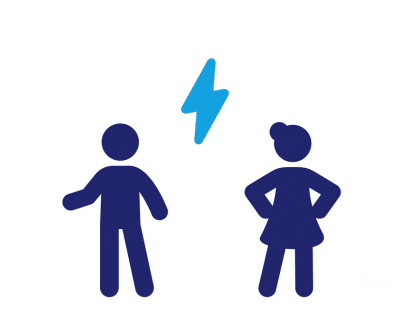MMH Men’s Mental Health does not provide direct mental health support. We do not offer crisis intervention, therapy, counselling, or medical advice. Instead, we provide information and signposting to external services that may be able to help.
Domestic Abuse
Overwhelmed and unsure where to turn? Support is available when you need it.
Need to talk?
Samaritans are here to listen, 24/7, 365 days a year. You can call them for free on 116 123 or visit www.samaritans.org
Prefer to Text?
Shout is a free, confidential, 24/7 text messaging support service for anyone who is struggling to cope.
If you feel in danger please call 999 or go directly to emergency services.
You’re Not Alone: Facing Domestic Abuse as a Man
Domestic abuse isn’t just a women’s issue—it affects men of all ages, backgrounds, and relationships. Abuse can be physical, emotional, financial, or even sexual, and it can occur in heterosexual, same-sex, or any type of romantic relationship.
📌 The stereotype that only men are abusers is false. If you’re experiencing abuse, know this: you are not alone, and support is available.
If domestic abuse is affecting your mental health, safety, or well-being, understanding the signs and seeking help is essential.
What is Domestic Abuse?
Domestic abuse is a pattern of controlling and abusive behavior used by one partner to exert power over the other. It can take many forms, including:
🔹 Physical Abuse – Hitting, shoving, kicking, biting, or any form of physical assault.
🔹 Emotional Abuse – Insults, threats, intimidation, put-downs, and humiliation.
🔹 Financial Abuse – Controlling finances, restricting access to money, or preventing employment.
🔹 Sexual Abuse – Forced sex, unwanted sexual touching, or coercion into sexual acts.
🔹 Technological Abuse – Monitoring your phone, tracking your movements, or using digital means to control you.
📌 Abuse is not always physical—emotional and financial manipulation can be just as damaging.
What Causes Domestic Abuse?
There is no single cause of domestic abuse, but common contributing factors include:
🔹 History of Abuse – People who grew up in violent households may be more likely to repeat those behaviors.
🔹 Control & Jealousy – Possessiveness, isolation tactics, and emotional manipulation can escalate into violence.
🔹 Substance Use – Alcohol and drugs can lower inhibitions, increasing aggression and abusive behavior.
🔹 Stress & Life Pressures – Financial problems, job loss, or mental health struggles can contribute to toxic relationship dynamics.
📌 Being a man does not cause domestic violence—abuse is a choice, and the abuser is responsible for their actions.
What Are the Signs of Domestic Abuse?
Abuse can be overt or subtle, and recognizing the warning signs is crucial. Common signs include:
🟠 Physical & Sexual Abuse
Hitting, shoving, kicking, or physical harm.
Forcing or pressuring sexual activity.
🟠 Emotional & Psychological Abuse
Insults, threats, and constant put-downs.
Isolation from friends and family.
🟠 Financial & Technological Abuse
Controlling access to money or preventing employment.
Monitoring online activity, tracking location, or using digital harassment.
📌 Not all relationships with these signs are abusive, but repeated patterns of control, manipulation, and harm indicate a serious problem.
The Different Types of Domestic Abuse
Domestic abuse can take many forms, and recognizing them can help victims and those at risk of perpetrating abuse:
🟡 Physical Abuse – Any form of physical violence, from pushing to more severe harm.
🟡 Emotional & Verbal Abuse – Threats, insults, humiliation, and intimidation to control a partner.
🟡 Sexual Abuse – Unwanted sexual advances, coercion, or forced sexual activity.
🟡 Financial Abuse – Preventing employment, restricting access to money, or stealing from a partner.
🟡 Technological Abuse – Tracking, online harassment, or using technology to manipulate or intimidate.
📌 Abuse is about control, and it can take many different forms. Recognizing it is the first step toward breaking free.
For Men at Risk of Perpetrating Abuse
If you are struggling with anger, control issues, or toxic relationship behaviors, taking responsibility is the first step toward change.
✅ Recognize the Signs – Be aware of controlling behaviors, emotional outbursts, and patterns of manipulation.
✅ Seek Support – Anger management programs, therapy, or professional guidance can help build healthier relationship skills.
✅ Take Accountability – Accept responsibility for past behaviors and actively work toward positive change.
📌 Breaking the cycle of abuse is possible—help is available to support change.
Explore More
Domestic Violence and Abuse
- Refuge provides support for women and children experiencing domestic violence.
- Women's Aid offers support and information for victims of domestic abuse.
- Men's Advice Line provides support for men experiencing domestic violence and abuse.
- National Domestic Abuse Helpline offers free and confidential support for those experiencing domestic abuse.
- Victim Support provides help and support for victims of domestic violence and abuse.
While we aim to provide accurate and updated information, MMH Men’s Mental Health is not responsible for the quality, accuracy, or availability of external services linked on this page. If you notice a broken link or have a resource to suggest, let us know.
Domestic Abuse has no place in a healthy relationship.
Everyone deserves to live a life free from abuse. Some things you can do towards moving to an abuse free, healthy life.
Acknowledge the abuse
Talk to someone you trust
Develop a safety plan
Seek legal help
Build a support network
Surround yourself with positive people who will empower you. Consider men’s support groups specifically focused on domestic violence.
You Are Awesome.
Finding support is the first step toward feeling better.
Take the next step:
Need to talk?
Samaritans are here to listen, 24/7. You can call them for free on 116 123 or visit www.samaritans.org
Prefer texting?
Shout offers free, 24/7 confidential support. Text ‘SHOUT’ to 85258 to start a conversation or visit
www.giveusashout.org
Explore More
Looking for guidance? Browse external resources on mental health, self-care, and well-being.
Support Groups
Find connection. Join an external support group and connect with others who understand.


